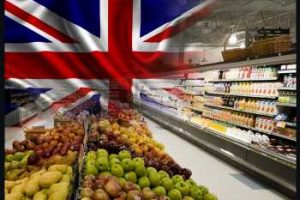UK Inflation Fastest In Nearly 30 Years

Adding pressure on the Bank of England to hike its interest rate at the February meeting, UK consumer price inflation accelerated at the fastest pace in nearly 30 years in December, driven by higher food, drinks and restaurant costs.
Consumer price inflation rose to 5.4 percent in December from 5.1 percent in November, the Office for National Statistics said Wednesday. The rate was forecast to climb marginally to 5.2 percent.
This was the highest annual inflation rate in the National Statistic data series, which began in January 1997 and it was last higher in the historical modeled data series in March 1992, when it stood at 7.1 percent.
Consumer price inflation is set to rise a little above 7 percent in April, Paul Dales, an economist at Capital Economics, said. That would be much higher than the peak of 6 percent that the Bank of England estimated in December.
The economist said the BoE is likely to raise interest rates faster than most expect this year, from 0.25 percent to 1.25 percent, with the next hike to 0.50 percent coming on February 3.
James Smith, an ING economist, said inflation data lifts the chance of February rate hike. But with inflation rates set to plunge in 2023, and the prospects of a severe wage-price spiral looking less likely, subsequent moves are likely to be more gradual, the economist added.
On a monthly basis, consumer prices gained 0.5 percent after climbing 0.7 percent in November. Inflation was forecast to ease to 0.3 percent.
Core inflation that excludes energy, food, alcoholic beverages and tobacco, advanced to 4.2 percent from 4.0 percent in November.
Another report from ONS showed that factory gate price inflation slowed marginally in December with transport equipment providing the largest downward contribution.
Output price inflation decreased to 9.3 percent in December from 9.4 percent in November. This was the first time the annual rate has slowed since May 2020. Economists had forecast the rate to remain unchanged at 9.4 percent.
Month-on-month, output prices grew 0.3 percent, following November’s 1.0 percent increase.
At the same time, input price inflation eased to 13.5 percent from 15.2 percent a month ago. The rate was also below the economists’ forecast of 13.7 percent.
Driven by weak crude oil and fuel prices, input prices were down 0.2 percent, in contrast to the 1.5 percent increase in November. This was the first time the monthly rate turned negative since August 2020.
Source: Read Full Article
